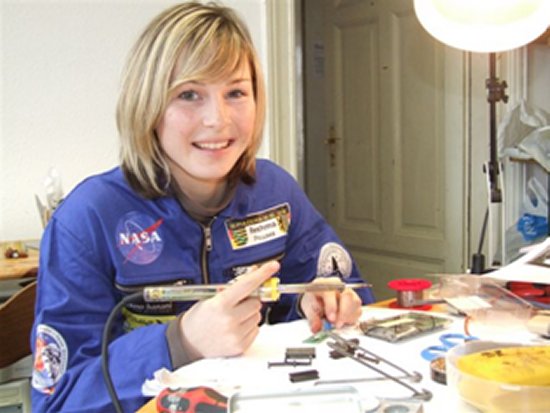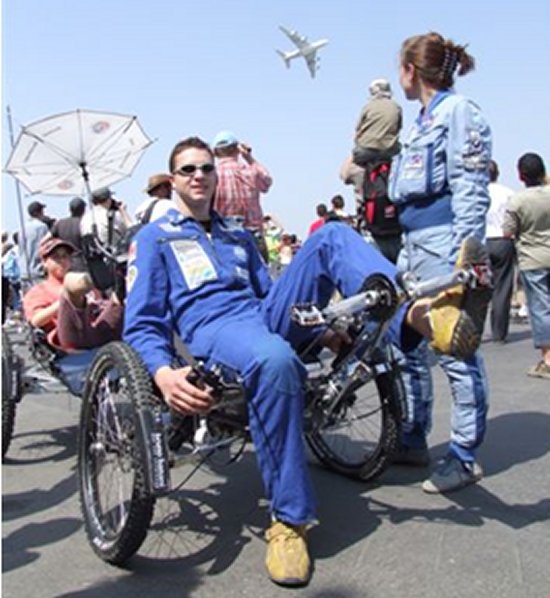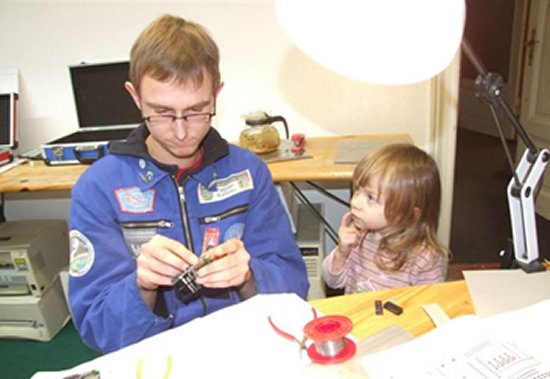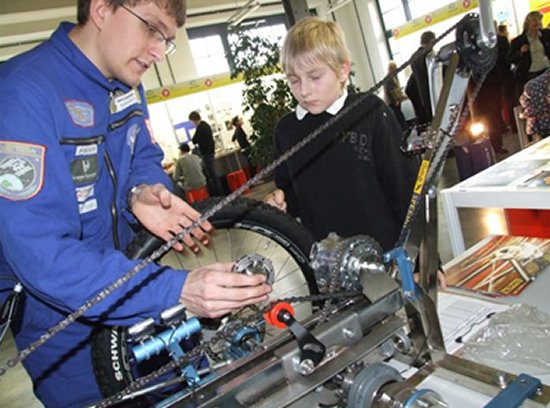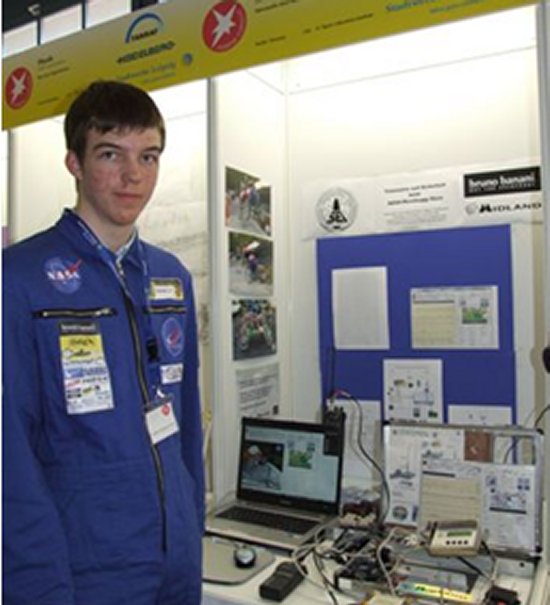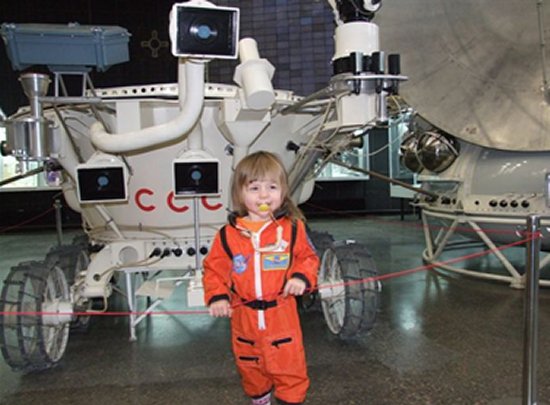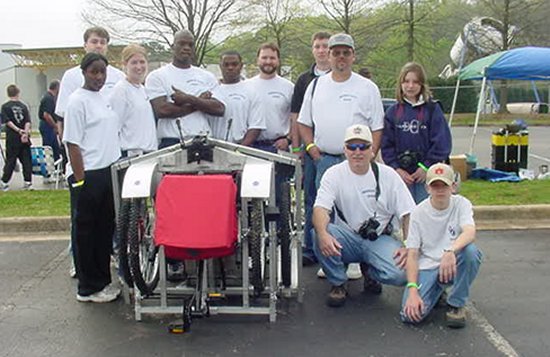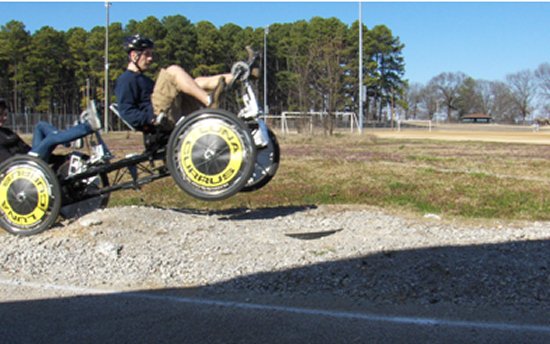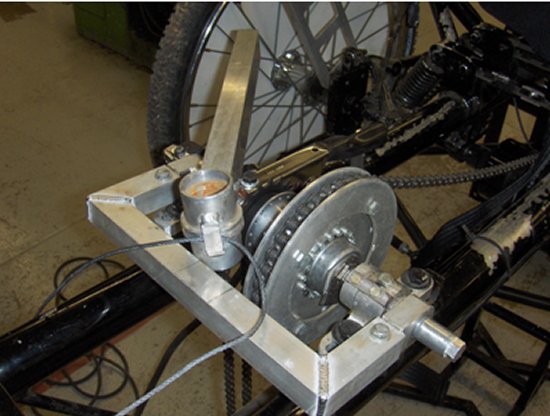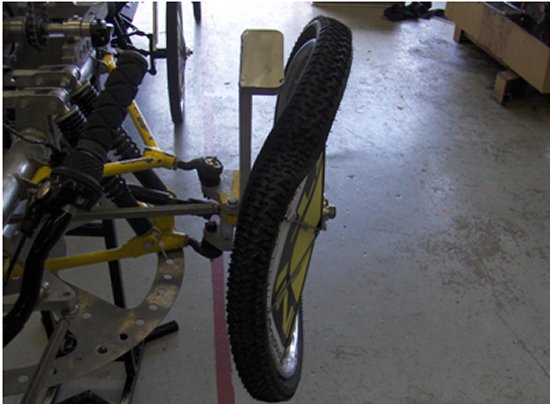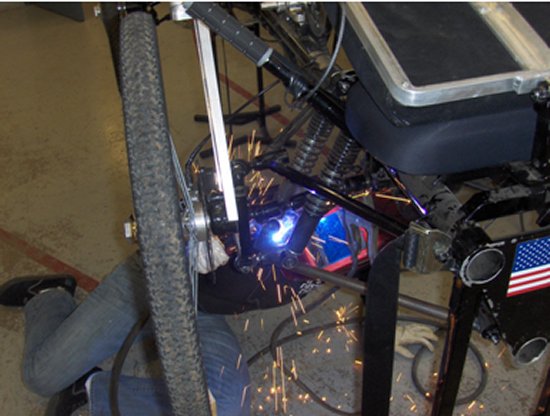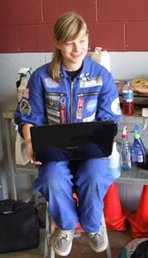
NASA’s 16th annual Great Moonbuggy Race is behind us! See our Facebook and Twitter pages to catch up on all the action and learn the results. Here’s the events of the penultimate pre-race day, as seen through the eyes of Anne Geyer of the German Space Education Institute team hailing from Leipzig, Germany. Take it away, Anne…
Registration, UAH and Thunderstorms – April 2, 2009
After a quite short night of four hours, getting up at 6:45 a.m. seems to be very hard. And actually it is. I spend too much time in bathroom so breakfast I miss out a little bit. We went to the Huntsville Center for Technology like the days before. There we get a truck for our moonbuggy to be brought to the Space & Rocket Center. At 9 a.m. we do all the registration for the race and check out our pit. Some teams had already brought their buggy there. We feel watched every step we take.
But we had to go on. The Moonbuggy has to be driven to the University of Alabama in Huntsville — which is just some feet away over the highway. To give our pilots a break, Christian and I take this challenge. I have to say it is a little bit alarming to drive just between all these fast-going cars on the highway! We have to be careful with steering and speed to avoid any accident. But it is a really exhausting workout. Our chase car made it safety, driven by Ralf. So we were happy and proud after reaching the Von Braun Research Hall. We take some pictures in front of the building. Afterward we visited the UAH technological building where the UAH moonbuggy team was. And they could not believe that we pedaled the whole way from Space & Rocket Center up to here!
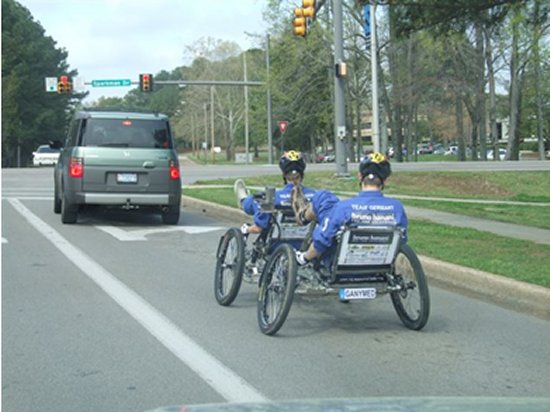
Surely the most unique wheels on the roads of Huntsville last week! Christian and
Anne drive to the UAHuntsville campus. No, they didn’t get a speeding ticket. (Photo: R. Heckel)
The other way around we are amazed by their construction. Their buggy consists of aluminum, plastic and carbon fiber parts, which makes it very light. Surprisingly they have the same 14-speed-Rohloff gears too. Having a look at their great equipment (the university even has a helicopter!) we take ride on their training course. Lisa and Thommy have some problems to get over the obstacles. Although racing conditions are harder than in the real race they get along with it.
Then we met Suzanne at the office to talk about internships at UAH. We eat lunch like real engineers — having a meeting and getting important information on UAH. We ask if it is possible to do an student exchange. And they really like us to study there for a while. We all get booklets with information on this topic. Dr. Benfield and Dr. Turner show us the IPT class. This is a special project with NASA. The students have to solve a real problem for NASA and their solution will be judged by them after a semester. I am really fascinated by this program. And I definitely will return to Huntsville within the next years to study one or two semesters at UAH and to take part in the IPT class.

The German team visits the University of Alabama in Huntsville. (Photo: R. Heckel)
About 3 p.m. we go to the TV station [Channel 31 in Huntsville] on top of the Monte Sano Mountain. It is quite exciting to see the interior of broadcasting studio. But at the same time it makes you nervous when you realize that you get interviewed and filmed and broadcasted! The anchorman is pretty nice and friendly so our heartbeat slows down a little bit. We talk about the moonbuggy race and our journey to America, about ourselves and the Mars 500 project (http://www.imbp.ru/Mars500/Mars500-e.html).
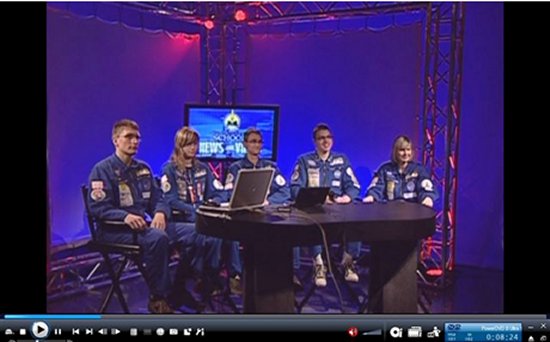
Team Germany participates in a studio interview for a weekend news report on
WAAY-TV, Channel 31 in Huntsville. (Screen-capture: R. Heckel)
The time in studio passes like nothing, and soon it is time to move on to Space & Rocket Center again.
At 5 p.m. the opening ceremony starts. A long chain of speeches were given. Even though we are tired it was quite interesting and motivating. The donators remind us how important it is to work in a team and to put your hopes and dreams into practice. Half an hour before leaving we get an tornado warning so we have to stay inside of the building. We watch a movie about the history of rocket development beginning with Wernher von Braun up to the latest inventions of the Ares Program. It is quite interesting although we have learned a lot of it at our Institute.
After the tornado all-clear we spoke with the Chief of Northrop Grumman. He spoke German and was very nice to see if he can invite us to an internship. Then we try to get back to the motel as fast as possible. Dinner we eat at Dreamland BBQ which we get recommended at UAH. The evening is filled with writing reports. Our pilots Lisa and Thommy are send to bed early so that are fit for tomorrow.
We really hope Anne and her teammates get to come to America to continue their studies — and to tackle next year’s race, of course. The team moves ever closer to the top winner’s circle. Will 2010 be their year?
Good Times, Bad Times and We Become a Fifth — April 3, 2009
This is a treat — the team takes turns recounting Day 1 of the race. Thanks to team member Christian Hein for the translation work.
Anne: 5 o’clock in the morning the alarm rings and after the strains of the last days it is hard to get up. However, suddenly I am awake. Today is the big day. Today the construction of our moonbuggy has to show its strength. But first we have to drive it from UAH to the Space & Rocket Center. We arrange the pavilion which Kay gave us and make the last racing preparations.
Thommy: That’s our moment. Most of us worked more than four months more or less intensely on the moonbuggy. Some calluses have occurred and there also flowed enough sweat. Lisa and I roll the buggy out of our box. It looks great.
Anne: Thommy and Lisa already roll into the direction of the boxing lane. Fabian packs his telemetry suitcase and gets in position. The cameras are prepared and supplied with new batteries. And I try to think of all eventualities to look after Thommy and Lisa the best I can.
Christian: Briefly before start, everybody becomes nervous a little bit and wait worriedly for the start signal. Also I wait tensely for it, because I already hold my camera in position since some time to get good pictures of the first driven meters.
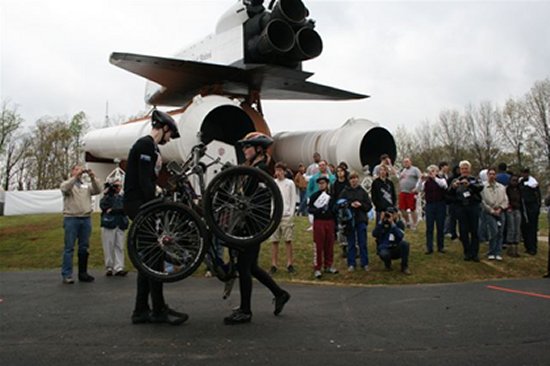
Lisa and Thommy get ready to race. (Photo: R. Heckel)
Thommy: The pressure rises. Lisa’s heartbeat is already on 100. Now the number 15 is called. Now it’s our turn. The first step is the assembling. Thus we have to try a long time, because the umbrella cannot be fixed, nevertheless, the cube rack of 4-foot edge length fits exactly over the buggy. Next challenge: the buggy must be carried over 6 meters. But with the necessary adrenalin, the 200 lbs of the moonbuggy can be lifted fairly easy. Last point: the disassembling. We make it in very good 6.6 seconds. Then we go to the start line. The tension rises extensively. Lisa and I start to dither because of the low temperature and the excitement. Once more everything is checked through by the voluntary assistants.
Anne: Everybody is on board. The buggy stands at the start line and waits only for the signal. The tension is hardly endurable. And suddenly there seems to be a problem.
Fabian: The telemetry case works well. Data comes in, files are logged. TEAM GERMANY! That’s us. Suddenly there was no more data. Nothing is working. It’s getting hectic. But in the last seconds Ralf fixes the problems of the telemetry of the buggy.
Thommy: Then everything happens quite fast. A volunteer gives us a sign, counts down and the signal sounded. Lisa and I give everything. Surprisingly the first three obstacles are taken very fast. Lisa does a great job. After all reflection about the distance, the driving behavior and the fitness of the drivers I am calmed that she begins that easily and calmly.
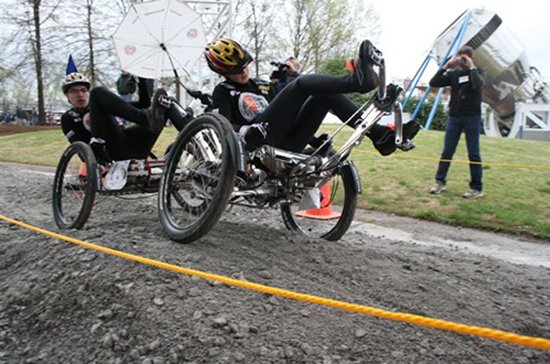
Battling the course. (Photo: R. Heckel)
Christian: Now I have to run, run and again run. Every time I have taken photos in a position, I start to run to overtake the buggy, to position myself anew and to shoot other pictures. If one has a look at the results, it is completely worth this strain.
Fabian: Nothing keeps me near the telemetry case. I run to the course to encourage our team. They pass quickly. After some time they return to my position. They push very hard and give everything they are able to do.
Anne: I run more or less the whole distance beside the moonbuggy. Now all the strain of the last days and the last preparations discharges in eager calls of encouragement. I am really proud of our drivers and our whole team.
Thommy: It does not work perfectly, but with the calls of our team we struggle through the course and reach the target after 4min 20sec. Completely exhausted I try to take breath again. Just now I notice that my thighs burn like fire. Happily we hug each other and I can fade out everything around myself. For me, there were no reporters, no photographers and no other people. It’s only this moment which counts and for which me and my team worked so hard. The feeling of having taken this challenge is extraordinary. I’m so proud of us — nobody will ever be able to take us this moment.
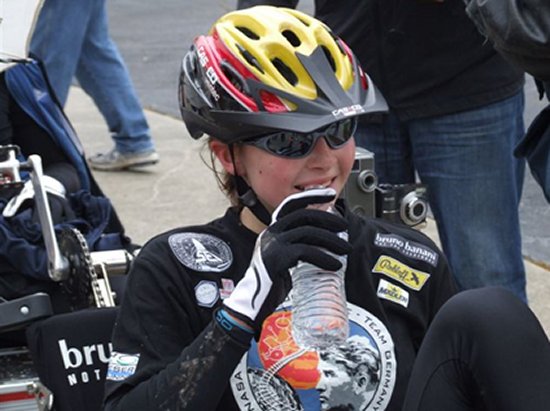
Flushed but happy with her team’s performance, Lisa hydrates and wonders when
she’ll appear on a Wheaties cereal box. (Photo: R. Heckel)
Fabian: In the target the clock stops at 4:20. Fortunately, we get no penalties. Nothing is broken, no unnecessary penalties for the racing time. Both drivers have made a good job.
Anne: It is simply miraculous. Other words can hardly be found to describe this moment. We rejoice and embrace. Now the race time doesn’t count. We have made it. I distribute water and warm clothes and we slowly return to our pit, still absolutely in a mess, chock-full with adrenalin and the experiences of the running.
Christian: The rest of the day goes on in very quiet and regular way. We take our lunch in two groups, because our pit should be unattended at no time, if the jury comes along to judge our award application and our team. While we guard our pit, many very interested moonbuggy race participants come to us. We often explain our technology and where we come from. That’s good practice, because today TV people stand unexpectedly in front of us. I pass this interview better than yesterday’s. Also the VIPs are interested in our Moonbuggy, So I was able to introduce the design of my differential to Prof. von Puttkammer as well as Philip Coker from Northrop Grumman.
Fabian: Hopefully tomorrow the race will be as well as today and the weather will be fine, because the drivers have more performance if it is not too warm. Both pilots agree: Tomorrow we want to have a better than 5th place finish!
Anne: The day was so mind-blowing that now no reasonable end occurs to me. I can only say: It was great. Tomorrow we will be even better. And I am proud to be allowed to be here.
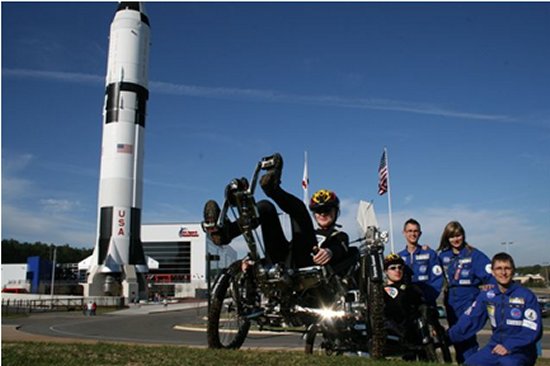
Is there anywhere in the world more perfect for NASA’s Great Moonbuggy
Race? (Photo: R. Heckel)
What a Surprising Day — April 4, 2009
Anne: And again the night is too short. Our report writers worked long until the early morning. I am tired. As so are the drivers. But this is not important now — it is the second racing day. Today we want to make everything better. Quickly we take breakfast and again we are on the way. As yesterday Christian and I drive the Moonbuggy from the University of Alabama in Huntsville to the Space & Rocket center.
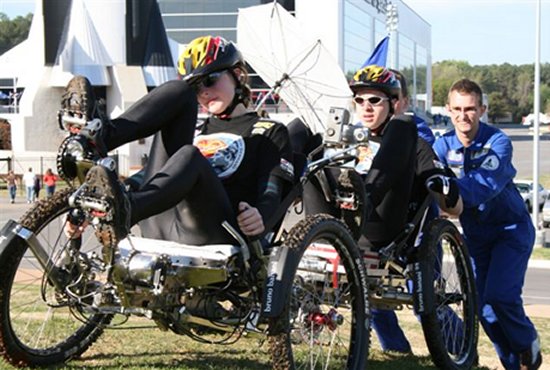
Lisa and Thommy get by with a little help from their friends, Christian and
Fabian. (Photo: R. Heckel)
Fabian: There is already a lot of action on the ground. A little hectic rush arises. Lisa learns that we race today in a different order — we have to start much earlier today. For that we were not prepared. It is based on the placements of yesterday; for this reason we have to race fifth! I take the control case and go under the pavilion where our “Mission Control center” is situated. The suitcase is ready to receive data. But nothing comes. The buggy rolls already to the start line. So I cry, “I don’t receive data!” Ralf lays down again under the buggy and finds a loose plug with one look. Shortly before we start, everything is okay and I can record. As yesterday, everything runs with the telemetry smoothly.
Lisa: In the whole hectic rush we forget start number, telemetry suitcases and gloves. Because coming late is penalized, we go as quickly as possibly to the start. The tension increases. Once again everything is inspected and checked by the official. Everything is getting so fast that I forget even the stage fright.
Anne: Before the start, there is no time for thinking. I do not have time to be nervous, so quickly is our buggy at the start line. However our drivers are determined — today is supposed to be better than yesterday. I can not do anything except cheer.
Lisa: Then the start signal sounds. With full power we start our round. The first obstacle comes in a hard way and with full impact. Ralf is taking photos and jumps back. Anne runs screaming next to us. The first three obstacles are so quickly overcome that the first mean-time is near 25 seconds. Now comes the difficult part of the course, and also today it does not run perfectly. The fifth obstacle gives us problems again. Also Thommy slips once again his right click pedal. In spite of that, the second mean-time is good — 1:25 minutes.
Thommy: We lie well in the time. It is to be hoped it remains like this. Lisa operates the buggy today still more perfectly and more exactly than yesterday; in spite of that the crater round around the moon lander is the purest act of strength.
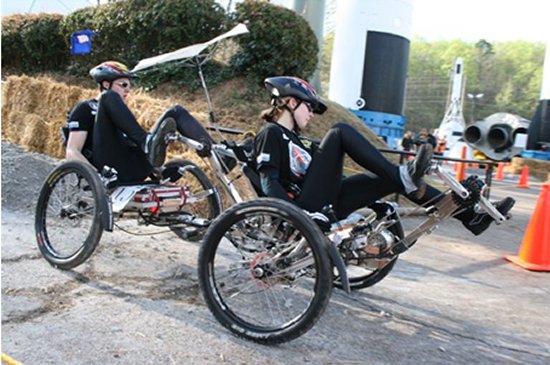
Team Germany pushes hard on Day 2 of the race. (Photo: R. Heckel)
Anne: I am up to the Saturn I, screaming and running next to the buggy. Now it goes into the crater round. I wait. From my position I can not see anything. Where are they? I stand excited behind the barrier. And at last they come.
Thommy: Then at the 13th obstacle it happens. Since the obstacle is quite closely marked out, we slide during the crossing from the gravel obliquely and we ram a pylon. It is not allowed to touch markers on the way. It is clear to us that it will not go without consequences. Now it becomes a torture. Under the pushing of our team we get it over the hilltop and with full speed it goes downhill toward the finish. Our problem curve of yesterday — under the nose of the Shuttle — Lisa takes today without problems, so we overcome the lunar dust obstacle with a lot of speed. In the last two obstacles we are shaken once again tidily. Then it is finished. We cross the finish line and I look at the timer. 4:20. Manure!! All the pains are covered by a new feeling — disappointment over not having improved the time of yesterday.
Lisa: Our buggy arrived at the limit of performance. More is simply not possible with a weight from approx 105 pounds. My legs hurt. However, to have gone the course once again without mistakes and problems is a small comfort. All parts held; now it must be analyzed where we can slim down the buggy. We can be proud, because we have the best time of all German teams in three years. Nevertheless, not to have received the victory is a little sad. The way up to there is more difficult than I had imagined at the beginning.
Fabian: The time is unfortunately almost the same as yesterday. Lisa and Thommy are angry a little bit in spite of the result. But from another perspective, it is the first time that the buggy went through the course well on both days and nothing has broken down. Also the telemetry and the on-board cam ran perfectly! The data is immense and will deliver a much more precise analysis.
Thommy: Through the continuous development of all our teams the results from year to year have become increasingly better. Our present time is better even compared to the university division — there, we would have had the 2nd place!
Anne: The time is super. However, we had expected more. Actually there is no reason to be disappointed… but nevertheless we are. Quite calmly and silently we drive back into the box lane. At the result chart, we slide into the 7th place from the 5th. [Note: After all results were in and assembly times and penalties were assessed, Team Germany ended up in 6th place in its division.]
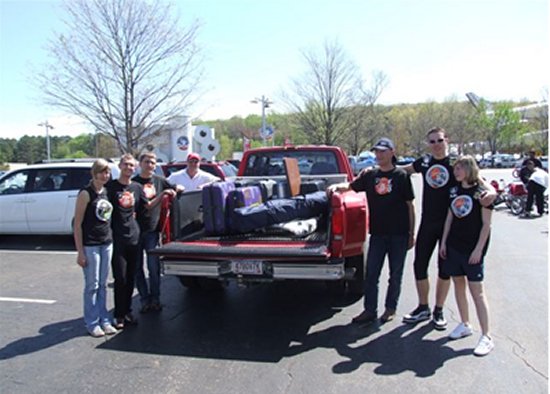
Team Germany is packed for departure. (Photo: R. Heckel)
Fabian: We begin now to disassemble the buggy. All parts are packed again and put in the suitcases. We decided to finish this process today so that we have tomorrow free. We want to visit the brandy shop in Lynchburg, where Jack Daniels whiskey is manufactured.
And Anne wraps things up for her team…
After that, we went for a short refreshment in the hotel again, then drive back to the Space & Rocket Center by 4 o’clock for the awards. Because the awarding starts at 5 o’clock, we begin to write our daily reports. Slowly the hall fills up. Seventy-five teams meet. You feel like in a beehive. Will we get a prize? With a 7th place, this is hardly to be expected. However, we quiet because it starts.
One fabulous speech follows the next. Every one is inspiring in its own way. However, one speech pricks at me this evening. It is by Frank Six, the responsible NASA man for the moonbuggy race. [Note: Frank is our university affairs officer and a chief spokesperson for the race; he’s also one of the original course designers.] He reminds us of the journey we made and of everyone who helped us. He tells us the journey they made for us to come here. It is all about the challenge we have taken — a challenge of learning how to rely on each other, of sharing responsibility and of solving the problems which stood in our way.
But it is not only hard work, he said. We enjoyed the engineering, and meeting other people sharing these interests is even better. And we gained a lot of experience for life. But, he said, we have not done this alone. The were many people who helped us. And we are deeply grateful. Now the future of the space travel is in our hands. He speaks of dreams that we can make become true, of an enthusiasm that was never as great as it is today, and of worlds waiting to be discovered by us. At the foundation of all this is the moonbuggy race, and the many students here.
Frank speaks, his voice filled with pride because he sees this vision becoming true here and now. His voice vibrates. Tears roll on his cheeks. The full hall is moved and surprised. I feel proud, and somehow also internally engaged. As Frank’s speech ends, all get up and clap, cheering.
Then the awards are assigned. The tension increases with every award given to another team. And suddenly the number 15 is read out as winners! “German Space Education Institute!” We won an award! I can not understand it; yet there we are already shiningly on the stage and we get a blue plaque that reads MOST IMPROVED AWARD. We improved our time from the previous year; it was around 6 minutes — the greatest improvement among all teams. In an overjoyed way we sit down on our places.
However, the next surprise comes quickly. Dr. von Puttkammer steps on the stage and gives a speech about international cooperation. At the end, he announces the German Space Education Institute gets the prize for “Best International Team!” All the strain of the last days, weeks, months falls now from us. And I must confess that there are tears in my eyes.
We celebrate our success with Dr. von Puttkammer afterward at Huntsville’s rich-in-tradition Mexican restaurant “El Palacio.” Then, let out, we end the day.
The path we took was not easy. However, we have done it. We won two awards today, and that is more than I had hoped ever to dream. We made many international contacts and close friendships, won experiences and learned how to get around difficult situations. I must say it was all worthwhile.
I would like to say thanks to a few important people, and I think I speak on behalf of the whole team. First I would like to thank Yvonne and Ralf, without whom none of us would have come as far as we did. Indeed it is not always easy but it is worth it to go the difficult way. Then to our parents, who always support us in everything and help us in difficult situations. Especially I would like to thank Thorsten, who is an attendant, helping hand and particularly a friend to us. Of course our sponsors must not be missed here — without them our journey would not have happened. Also to all the ones working quietly in the background, who cleared some heavy stones away for us, I would like to thank you.
And to my team, which persisted on the journey overwhelmingly. Many thanks to you all. You created this — from actions come vision.
I return to Huntsville for the Great Moonbuggy Race next year for sure. Then, however, I will belong to the university division. And I will study engineering.
If you and your teammates stick with engineering, Anne, our future in space — and here at home — grows brighter every day. Thanks for your insight, and have a safe journey home.
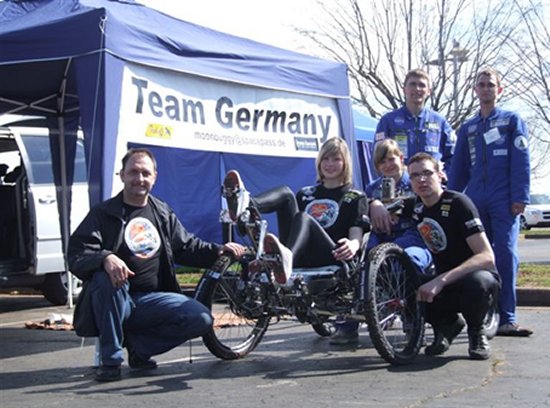
One last memory: 2009 Great Moonbuggy Race competitors from the German
Space Education Institute. In front, from left, team advisor Ralf Heckel
and pilots Lisa Hartenstein and Thommy Knabe. Behind them, seated,
is Anne Geyer. Standing are Christian Hein, left, and Fabian Hoffman.
(Photo courtesy of Ralf Heckel — thanks so much, Ralf!)
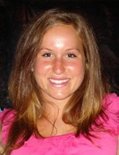 The Carleton University team is back home in the wake of NASA’s Great Moonbuggy Race in Huntsville, Ala., April 3-4. They’re heading into the home stretch on their spring term at Carleton, as are most colleges and universities, but our resident blogger and 2009 Carleton moonbuggy co-driver Lindsay Los took time out to send us some final thoughts…
The Carleton University team is back home in the wake of NASA’s Great Moonbuggy Race in Huntsville, Ala., April 3-4. They’re heading into the home stretch on their spring term at Carleton, as are most colleges and universities, but our resident blogger and 2009 Carleton moonbuggy co-driver Lindsay Los took time out to send us some final thoughts…













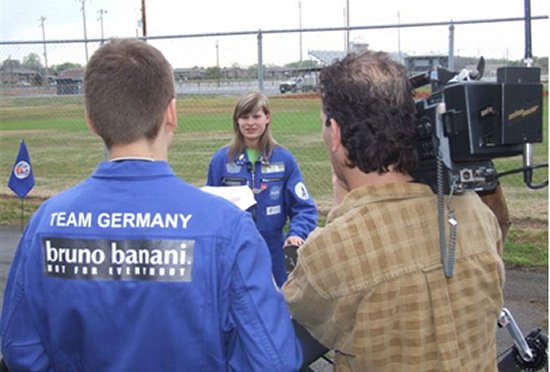

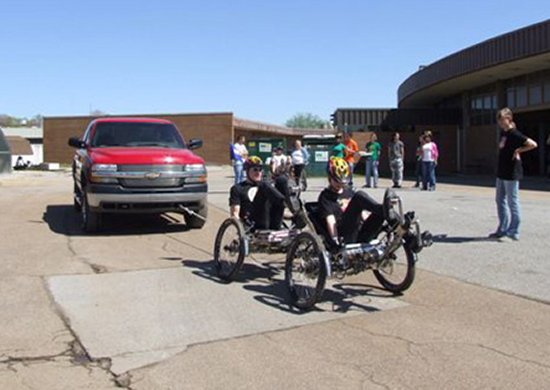

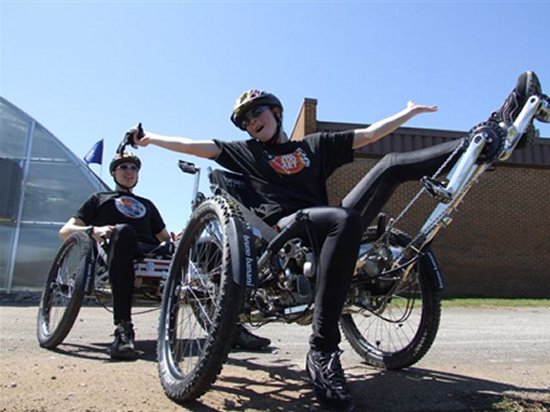
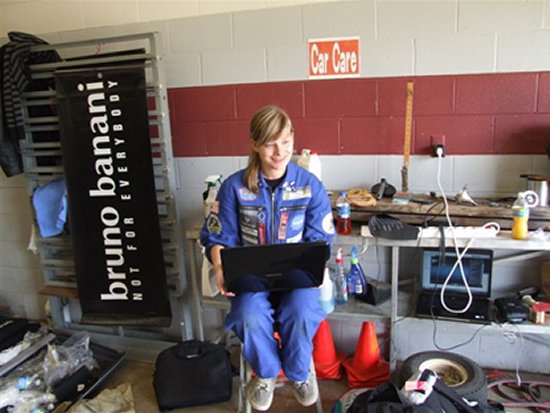
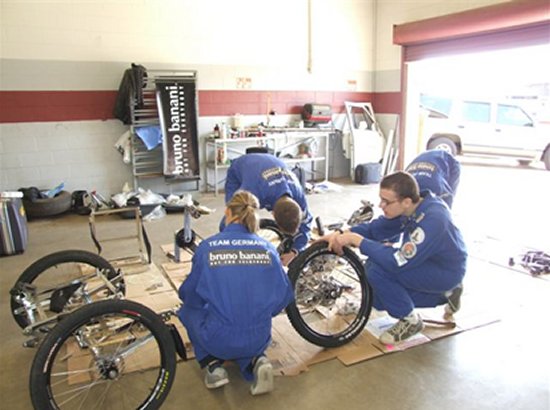
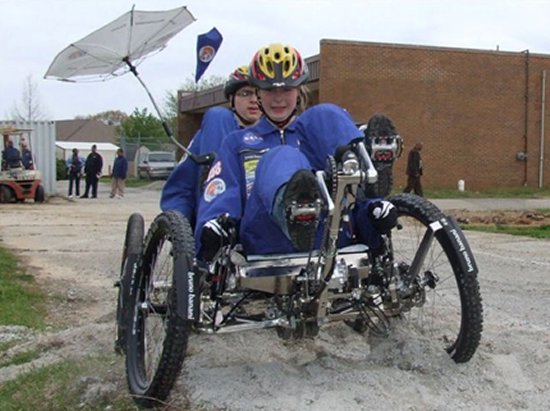
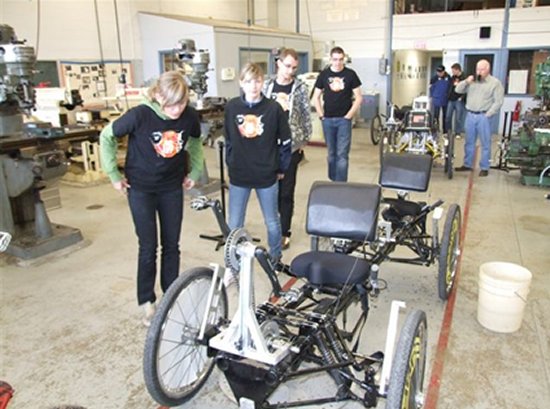
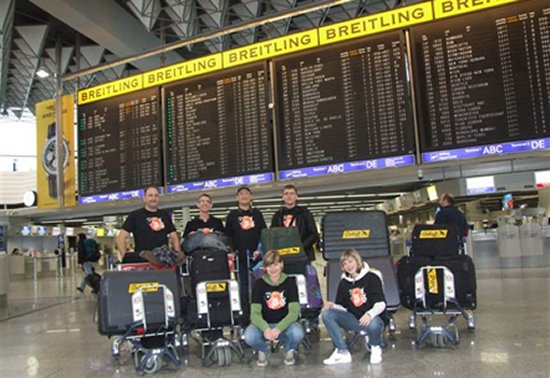

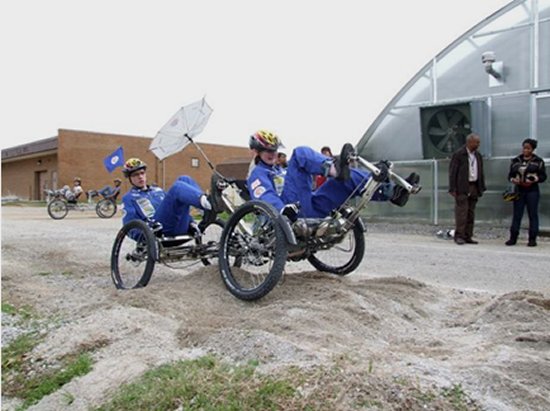


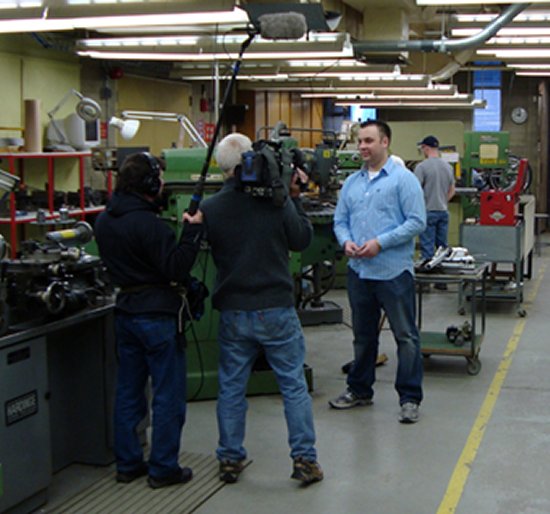
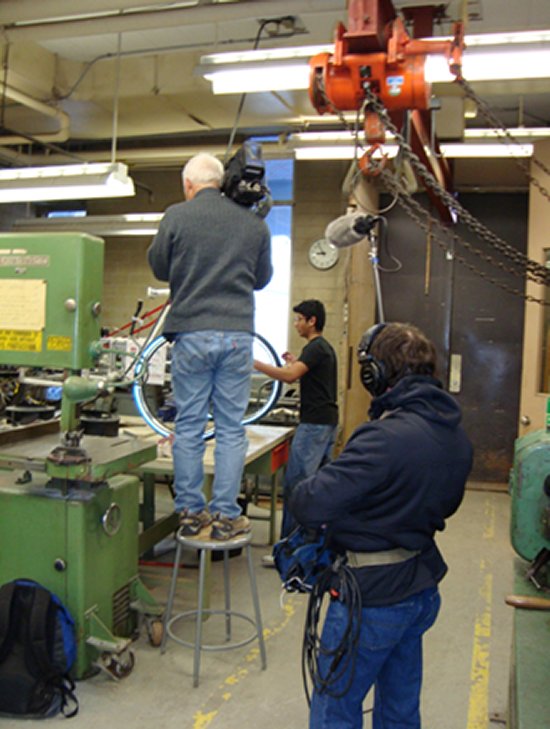
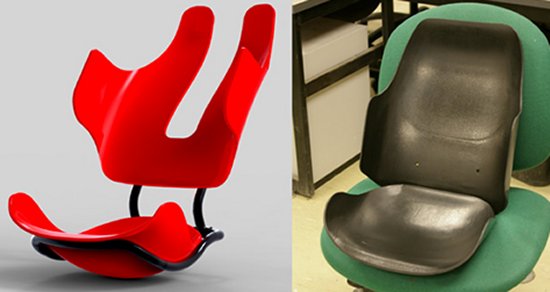
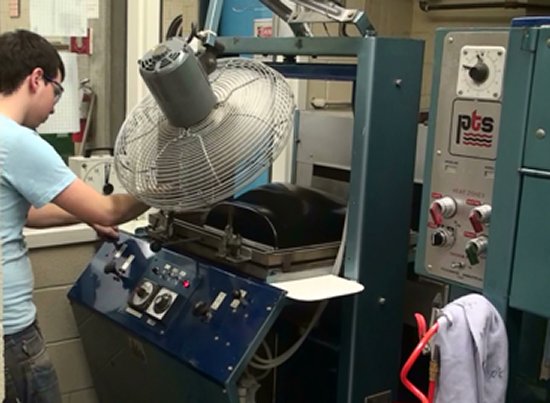
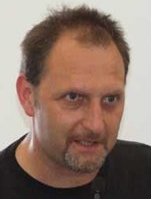 Ralf Heckel’s got an update on technical work being concluded on the German moonbuggy. His team is preparing to depart for the United States at the end of this week. Race time is nearly upon us!
Ralf Heckel’s got an update on technical work being concluded on the German moonbuggy. His team is preparing to depart for the United States at the end of this week. Race time is nearly upon us!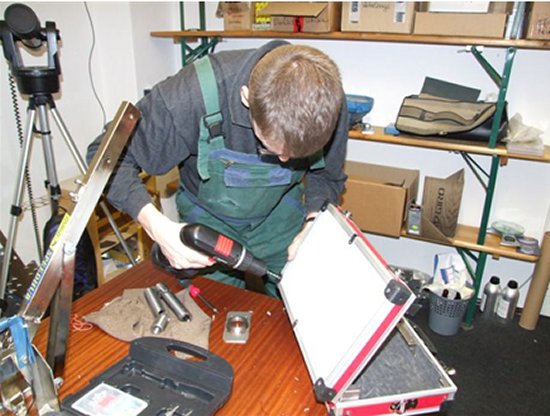
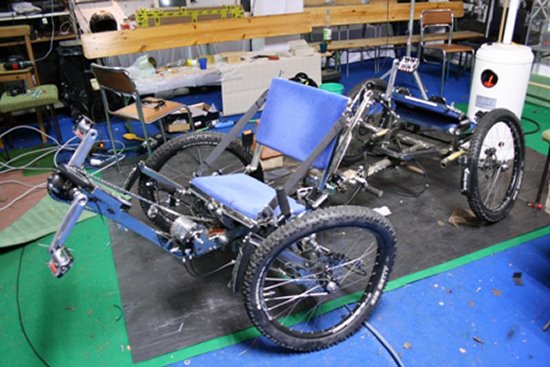
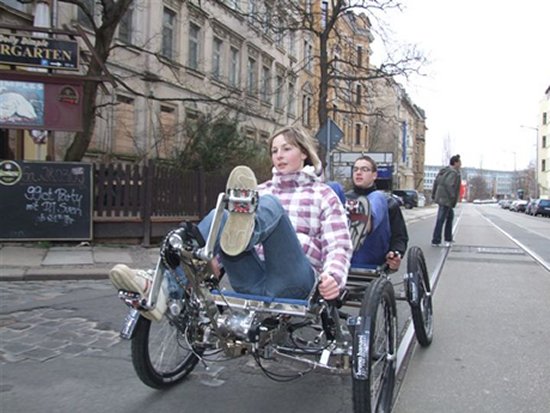
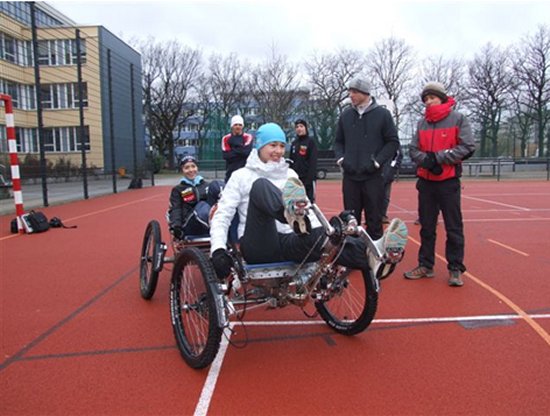
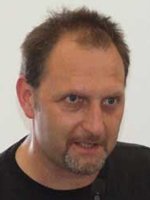 Ralf Heckel’s back with a spotlight on the German Space Education Institute and its 2009 moonbuggy team.
Ralf Heckel’s back with a spotlight on the German Space Education Institute and its 2009 moonbuggy team. 